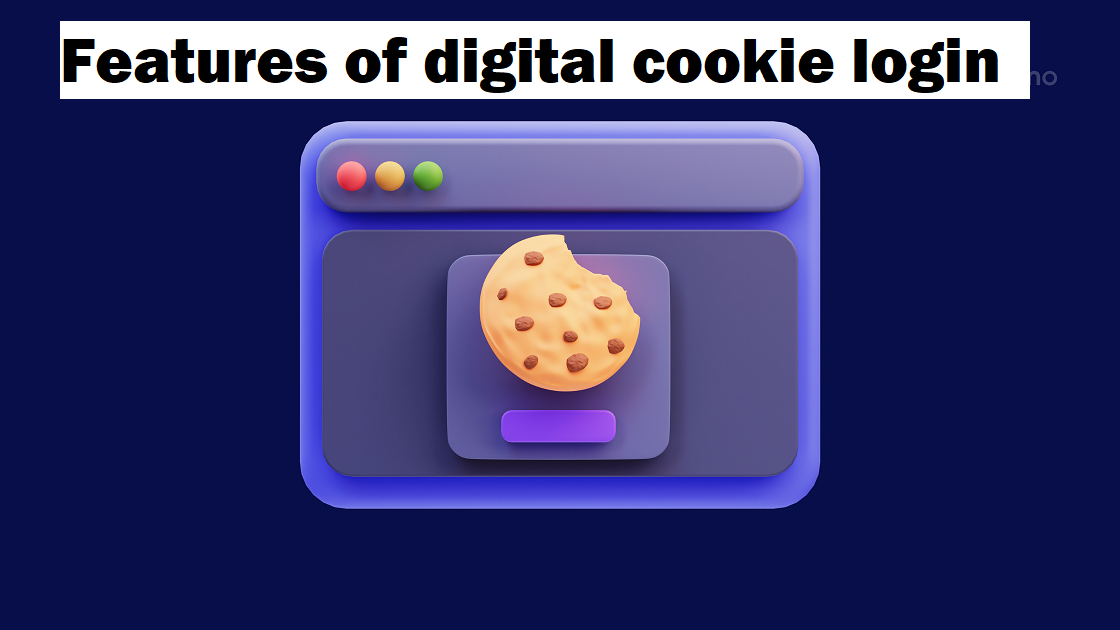In the digital age, user authentication and security have become top priorities for online platforms. The concept of a "cookie login" is an essential component of this, as it enhances user convenience while maintaining a secure digital environment. Here’s a breakdown of the Features of digital cookie login that make digital cookie login effective and user-friendly:
1. Persistent Login Sessions
A digital cookie login enables persistent login sessions, allowing users to remain logged in for a specified period even after closing their browser. This feature is especially useful for users who frequently visit the same website. By using cookies stored in the user’s device, websites can “remember” users, eliminating the need for repeated logins.- Example: Websites like Gmail or social media platforms use cookies to keep users logged in, providing uninterrupted access to their accounts.
2. Customizable Time Limits
Cookies used in login systems can be programmed to expire after a specific period, enhancing security. Websites often provide the option for users to select their session duration, ranging from a few hours to a few weeks.- Benefit: Users who access their accounts from personal devices can choose longer sessions, while those logging in from shared devices can set shorter expiration times for security purposes.
3. Encrypted Data for Security
Security is paramount in cookie-based login systems. Sensitive data stored in cookies, such as authentication tokens or session IDs, are encrypted. This prevents unauthorized access, ensuring that even if cookies are intercepted, they cannot be exploited by malicious actors.- Technology: Encryption methods like HTTPS and SSL/TLS protect the transfer of cookie data between a user’s device and the server.
4. Multi-Device Support
Cookies can be synchronized across multiple devices through cloud-based login systems. This allows users to log in seamlessly from their smartphones, laptops, or tablets, with their session data and preferences synchronized across all devices.- Convenience: Multi-device support ensures a consistent user experience, no matter the platform.
5. Two-Factor Authentication Integration
Many websites now integrate two-factor authentication (2FA) into cookie login systems. After logging in with a username and password, the user receives a second authentication challenge (such as a text message code). Once authenticated, a cookie is generated to recognize the device and reduce the need for 2FA on subsequent logins.- Security Enhancement: This feature increases account protection by ensuring that even if login credentials are compromised, the attacker cannot bypass the 2FA requirement.
6. Single Sign-On (SSO) Compatibility
Digital cookie login is often paired with Single Sign-On (SSO) systems, enabling users to authenticate once and access multiple websites or applications without the need for repeated logins. SSO platforms rely on cookies to maintain authentication across different services.- Efficiency: SSO simplifies user workflows by minimizing the number of login prompts and enhancing productivity.
7. Granular Cookie Permissions
Users today have more control over the cookies stored on their devices, thanks to evolving data privacy regulations like the GDPR (General Data Protection Regulation). Websites must request user consent to store cookies, and users can specify which types of cookies are allowed, such as functional, analytical, or marketing cookies.- User Control: By giving users the power to manage their cookies, websites increase transparency and trust.
8. Automatic Logout for Inactivity
For enhanced security, digital cookie logins can be configured to automatically log users out after a period of inactivity. This feature prevents unauthorized access in cases where a user leaves their device unattended.- Application: Online banking platforms often employ this feature to safeguard sensitive financial information.
9. Device-Specific Cookies
Cookies can be restricted to specific devices, meaning even if a user’s credentials are compromised, the login session cannot be replicated on another device. This is particularly useful for services that prioritize high levels of security, such as enterprise platforms or financial services.- Protection: This feature minimizes the risk of account hijacking by limiting the use of cookies to trusted devices.
10. Session Management Tools
Many platforms offer users the ability to view and manage their active sessions, allowing them to see where they are logged in and remotely terminate unwanted sessions. This gives users control over their digital footprint and adds an extra layer of security.- Example: Google Account Management offers users insight into active sessions across devices, helping to detect suspicious activity.
